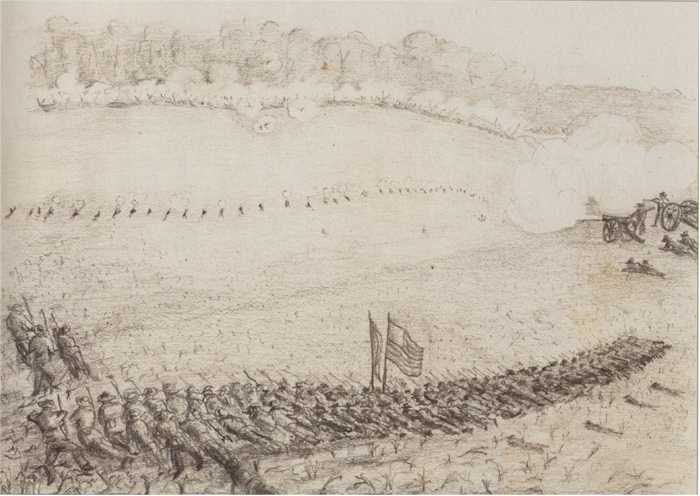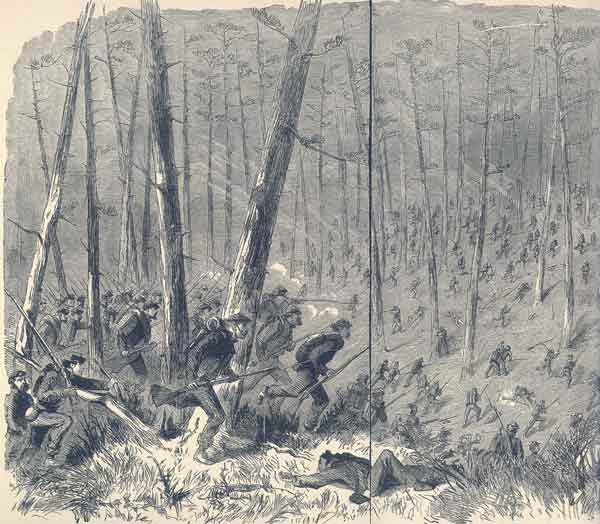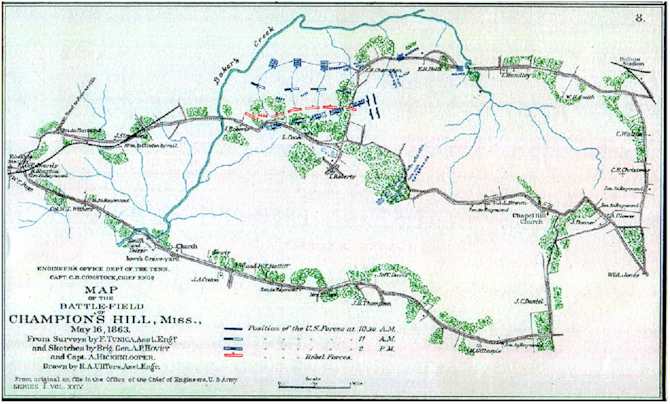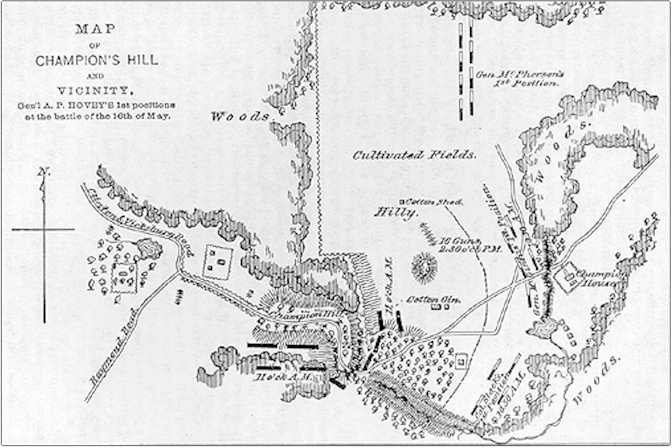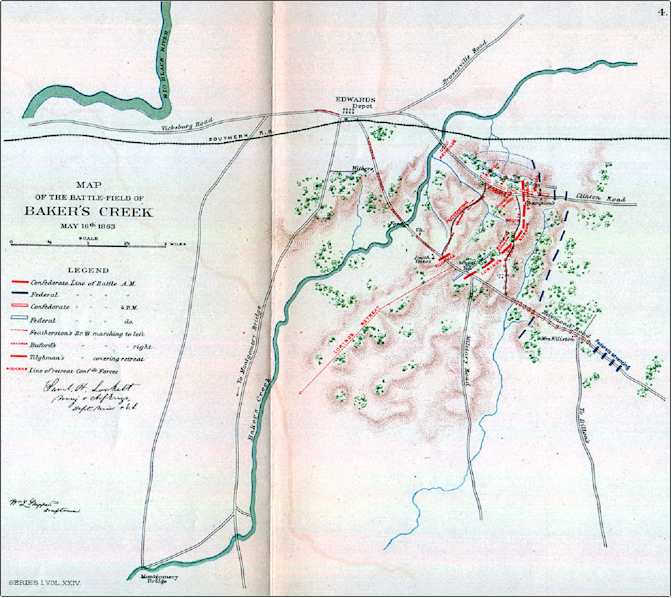|
Champion Hill Maps
[The map is remarkably accurate and can be overlain on modern maps]
A brief history from "A Guide to the Campaign & Siege of Vicksburg" Champion Hill, the decision battle of the Vicksburg Campaign, began about 7:00 a.m. Lieutenant General John C. Pemberton, the Confederate commander, deployed his three divisions in a three mile-long battle line that ran from southwest to northeast along a ridge overlooking Jackson Creek. His position was suited for defense and was especially formidable against attacks along the Middle and Raymond roads. He was, however, unaware that one of the three Union columns was pushing down the Jackson Road toward his unprotected left flank on Champion Hill. If unchecked, this Union force could capture Edwards and cut the Confederates off from their base of operation - Vicksburg. Shortly aft 9:00 a.m. a courier brought warning of the Federal advance along the Jackson Road. Confederate troops were shifted to the left to cover Champion Hill and protect the vital crossroads. Federal soldiers arrived near the Champion house, swung from column into double line of battle and unlimbered their artillery. The battle roared into action. Major General Grant established his headquarters at the Champion house. He ordered his 10,000 men on the Jackson Road to move forward in magnificent style with flags flying. The long blue lines extended westward beyond the Confederate flank. To meet this threat, Confederate troops shifted farther to the west creating a gap between the forces defending the crossroads and those defending the Raymond Road. By 11:30 a.m. the Federals closed in on the Confederate main line of resistance. With a cheer they stormed the position. The fighting was intense as the battle raged on Champion Hill. The lines swayed back and forth as charge and countercharge were made. Shortly after 1:00 p.m. the strength of numbers prevailed. The blue tide swept over the crest of Champion Hill. The Confederates fell back in disorder to the Jackson Road followed closely by the hard-driving Federals. The powerful Union drive captured the crossroads and severed the Jackson Road escape route. Confronted by disaster, Pemberton ordered his two remaining divisions to counterattack. Leaving one brigade to guard the Raymond Road, the Confederates moved from their right along the Ratliff Road toward the crossroads. Brigadier General John S. Bowen's 4,500 men attacked the Federals near the crossroads. Using bayonets they drove the Federals back and gained control of Champion Hill. Outnumbered, the Confederate attack faltered short of the Champion house. Grant ordered up fresh troops to drive back the Confederates and moved the Federals forward along the Middle and Raymond roads. Confederate resistance was shattered and Pemberton ordered his army from the field. Federal combat strength: 32,000.
Casualties: 2,441. Used with permission, "A
Guide to the Campaign & Siege of Vicksburg", State of
Mississippi, Department of Archives and History, 1994. |
|
| Home | Grant's March | Pemberton's March | Battle of Champion Hill | Order of Battle | Diaries & Accounts | Official Records | | Killed & Wounded | History | Re-enactments | Book Store | Battlefield Tour | Visitors | Copyright (c) James and Rebecca Drake, 1998 - 2004. All Rights Reserved. |

